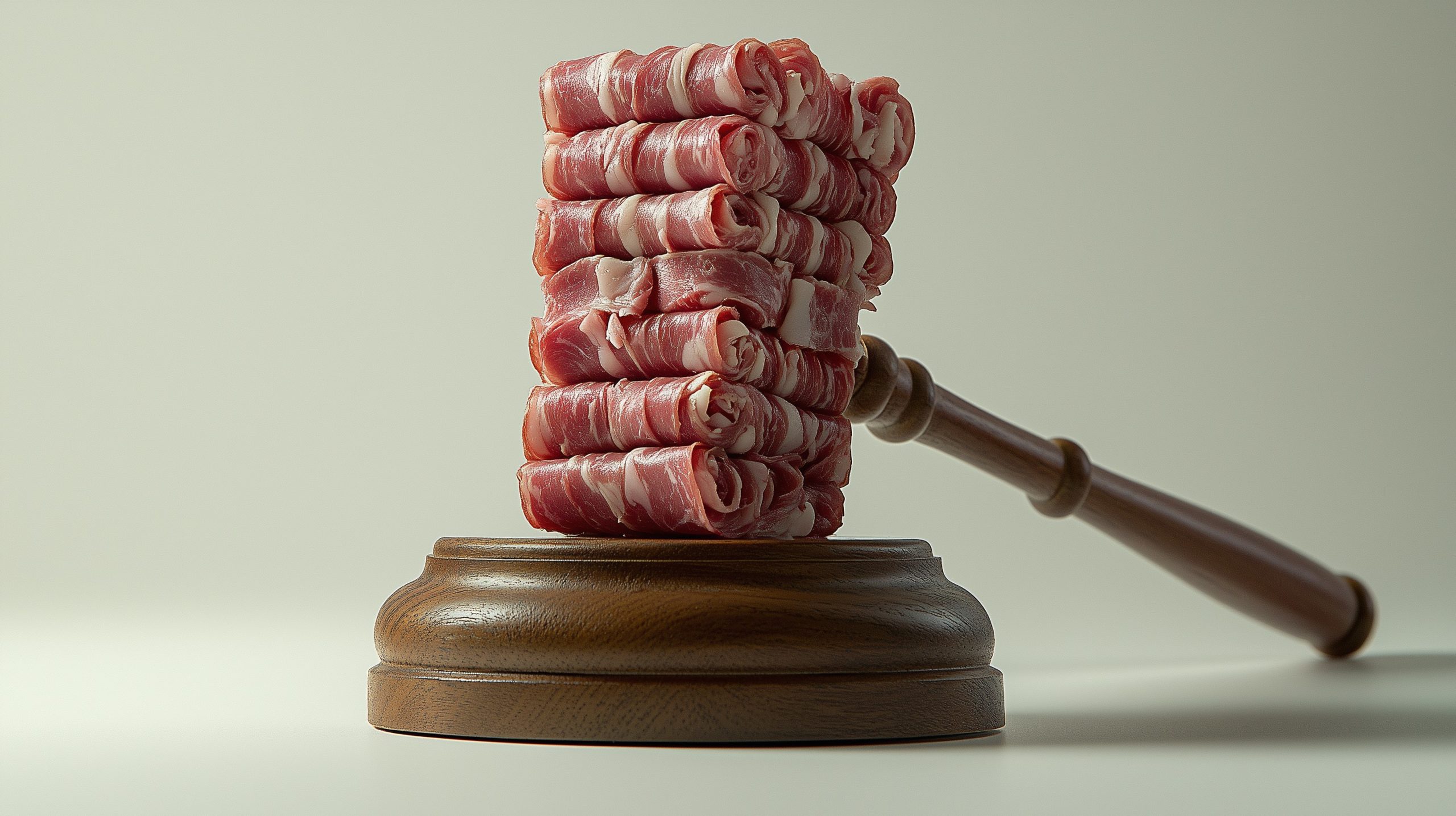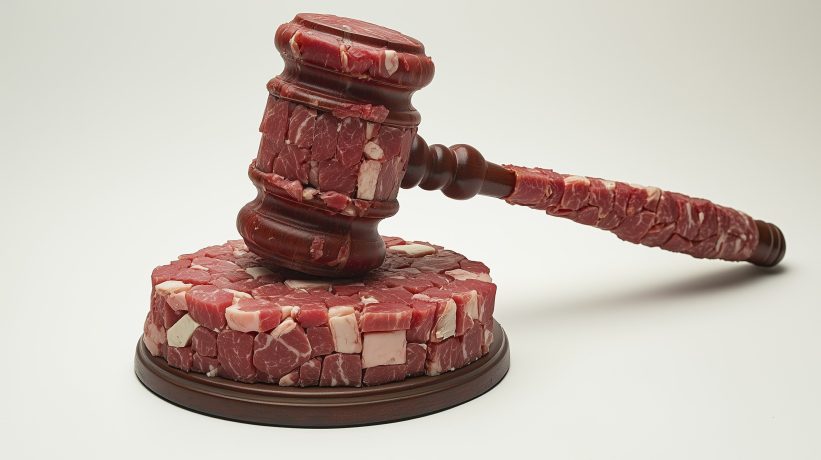
Subway customers across New York are discovering their sandwiches contain dramatically less meat than the mouth-watering portions shown in advertisements. The restaurant chain's popular Steak & Cheese sandwich has become the centerpiece of a legal battle, with evidence suggesting customers receive only half the meat portrayed in marketing materials.
by LawInc Staff
November 1, 2024
A new class action lawsuit filed in New York federal court accuses Subway of deceiving customers by advertising sandwiches containing much more meat than they actually serve. The case alleges Subway’s sandwich ads are “grossly misleading” and constitute false advertising and deceptive business practices under New York law.
This guide provides a detailed breakdown of the claims, evidence, legal issues, and potential implications of this Subway sandwich lawsuit. Get the full scoop on what the case alleges, the specific laws at issue, and what it all means for Subway and consumers.
From the named plaintiff’s story to photographic proof, Subway’s potential defenses, the court process ahead and more, learn everything you need to know about this high-profile case that has Subway playing defense.
1. Understand the Lawsuit’s Core Allegations
-
- Ads vs. Reality: Subway’s ads show sandwiches overflowing with deli meat, but the reality is allegedly much skimpier.
- Exaggerated Portion Sizes: The lawsuit claims Subway’s ads depict sandwiches with 200%+ more meat than what’s actually served.
- Bait and Switch: Consumers are allegedly lured in by pumped up sandwich photos, then served something quite different.
- Steak & Cheese Cited: The plaintiff specifically calls out Subway’s Steak & Cheese sandwich for having way less meat than advertised.
- Cheesy Garlic Steak Also Questioned: The complaint mentions the Cheesy Garlic Steak sub as another example where meat portions allegedly fall short.
Examples:
-
- The lawsuit includes comparison photos showing a hefty Steak & Cheese in Subway’s ad vs. a much sparser real-life version.
- Plaintiff Anna Tollison ordered a Steak & Cheese via Subway’s app for pickup, expecting a meat-packed sandwich per the ad.
- Tollison contends she received a sandwich with about 50% less meat than shown in Subway’s tantalizing ad photos.
- The complaint cites online reviews and social media posts from other disgruntled Subway customers who felt similarly duped.
- A New York Post exposé from last year is referenced, in which a reporter found Subway consistently skimping on cold cuts.
Key Takeaways:
-
- The lawsuit paints a picture of Subway brazenly overstating meat portions to boost sales, then under-delivering to customers.
- If true, the allegations suggest a wide gap between Subway’s juicy sandwich ads and the leaner reality – to the tune of 50%+ less meat.
- While the Steak & Cheese is the main example, the Cheesy Garlic Steak mention implies this may be a pattern across Subway’s offerings.
- Photos, customer complaints and media reports lend credence to the claims that this is an ongoing issue many have experienced.
- With food prices soaring, any systematic meat skimping by Subway to bolster profits would be especially concerning for consumers.
FAQs:
-
- Why does meat portion size matter so much for a Subway sandwich? Protein is often the priciest part of a meal, so skimping on meat while charging full price is deceptive to customers who have a right to get what they pay for.
- Has Subway faced similar complaints about portion sizes before? Yes, Subway has a history of lawsuits over its sandwich sizes, ingredients and advertising, including a famous case questioning its “footlong” subs.
- How widespread is the problem of restaurants overstating portion sizes? While Subway is in the spotlight, it’s an industry-wide issue, as eateries can pad profits by exaggerating portions and serving less.
- What if I had a similar experience at Subway recently? Save any evidence like photos, receipts, ads, etc. and consider contacting the plaintiff’s law firm to share your story, as it may help bolster the class action.
2. Examine the False Advertising Laws at Issue
-
- NY General Business Law §349: Prohibits deceptive business acts and practices – Subway allegedly deceived customers re: meat quantities.
- NY General Business Law §350: Prohibits false advertising – Subway’s ads with inflated meat portions were allegedly “grossly misleading.”
- Elements of False Ad Claims: Plaintiff must show (1) ad was misleading in a material way, (2) she saw and relied on it, (3) and suffered injury as a result.
- Materiality: Would the misrepresentation likely affect a reasonable consumer’s purchasing decision? More meat for money is arguably material.
- Damages: Plaintiff seeks $50-$500 per violation in statutory damages, plus compensatory damages for alleged overpayment for value received.
Examples:
-
- Advertising a Steak & Cheese with double the meat shown vs. what’s served would be objectively false and likely affect a consumer’s decision to buy.
- Tollison says she relied on Subway’s exaggerated Steak & Cheese photos in choosing that sandwich, expecting a similar meat quantity.
- The alleged “bait and switch” of luring customers with overflowing sandwiches, then serving them something much skimpier is argued to be deceptive and injurious.
- If say, a Steak & Cheese has half the meat pictured, a customer could claim they overpaid by 50% for the amount of meat received.
- Subway may argue no reasonable consumer expects to get the stylized, oversized sandwiches shown in professional food ads.
Key Takeaways:
-
- NY has robust consumer protection laws prohibiting false advertising and deceptive business practices that could apply here.
- The core issues will be whether Subway’s meaty ads would likely mislead reasonable consumers and if that affected purchasing decisions.
- While puffery in ads is common, making factual claims like inflating portion size 50%+ could cross the line into false advertising.
- Subway will likely argue its sandwich ads are non-actionable puffery and no one expects to get picture-perfect subs in real life.
- If certified as a class action, Subway could face substantial statutory damages, but each plaintiff’s actual losses may be modest.
FAQs:
-
- What’s considered false or deceptive advertising under NY law? Any ad that’s likely to mislead a reasonable consumer in a material way, such as by significantly overstating product attributes like portion size.
- Does it matter if Subway intended to mislead people with its ads? No, deceptive intent is not required – the law focuses on the ad’s probable impact on reasonable consumers.
- Can Subway argue customers should know sandwich ads are exaggerated? They can assert that as a defense, but a jury may find a 50%+ portion inflation crosses the line from puffery to deception.
- What type of evidence will be key for this false advertising case? The plaintiff will need to show the ads, explain how they misled her, and prove she and others suffered losses as a result.
- How might the NY Attorney General get involved? The AG enforces NY consumer protection laws, so they may launch their own investigation or join the case if it appears Subway systematically duped New Yorkers.
3. Assess Potential Weaknesses in Subway’s Defenses
-
- “Everybody Does It” Argument: Claiming pumped up food photos are an acceptable industry norm doesn’t negate deception if the images go too far.
- Fine Print Disclaimers: Even if Subway has small print stating “portion sizes may vary,” prominently depicting sandwiches 50%+ meatier is still misleading.
- No Reasonable Reliance: Subway may say no sensible customer expects to receive an oversized ad sandwich, but a jury could disagree.
- Need to Prove Losses: Subway may attack plaintiffs’ claimed damages as speculative since they still got a sandwich, just with less meat than pictured.
- First Amendment Protections: Commercial free speech rights are limited, especially with objectively misleading portion size claims, not just opinion statements.
Examples:
-
- Even if other sandwich chains also exaggerate, Subway doesn’t get a free pass to pump up meat portions by 50%+ if it’s materially deceptive.
- Subway’s disclaimer about varying portion sizes must be clear and conspicuous to override its oversized sandwich visuals, not buried in fine print.
- Arguing a real vs. advertised Steak & Cheese photo difference is just stylized “puffery” no one takes literally may not fly if the ads would dupe a reasonable consumer.
- Plaintiffs will need to offer a sound method for calculating their alleged overpayment damages, such as by weighing actual vs. advertised meat amounts.
- The First Amendment doesn’t protect objectively false commercial speech, so Subway can’t hide behind free speech if it’s caught in a clear lie.
Key Takeaways:
-
- Subway will try to downplay its ads as just stylized marketing puffery that everyone does and no one takes literally, but that may not convince a jury if the meat exaggeration is extreme.
- Fine print disclaimers about portion variations likely won’t override Subway’s in-your-face images of sandwiches with 50%+ more meat than reality.
- Expect Subway to argue reasonable consumers wouldn’t actually expect an ad-sized sandwich, but plaintiffs may counter that a 50%+ meat inflation would fool most people.
- While plaintiffs’ claimed losses are less tangible than say, physical injury, they can point to objective meat weight differences to quantify any overpayment.
- Subway’s potential First Amendment defense is undercut if its ads make demonstrably false factual statements about portion sizes, not just opinion claims.
FAQs:
-
- Can Subway be liable if its meat portions vary a bit from ads? Minor variances are likely OK, but major differences of 50%+ between depicted vs. actual meat amounts could be deceptive.
- What if Subway has evidence that customers don’t expect to get picturesque sandwiches? Subway can present studies, surveys, expert testimony, etc. to try to show its ads don’t actually mislead reasonable consumers.
- How might Subway attack class certification in this case? It may argue that meat portions vary by location, employee and order, so there are too many individual factors for a class action.
- Could the case settle before a jury weighs Subway’s defenses? Possibly, if Subway sees the writing on the wall that its chances of defeating the claims at trial are slim, it may look to settle to cap its losses.
- What if Subway’s fine print makes customers waive rights to sue? After Subway’s last class action over its “footlong” subs, it added arbitration clauses to block lawsuits, but their enforceability here remains to be seen.
4. Know the Class Action Process & Join the Case
-
- Plaintiff Files Complaint: Anna Tollison filed the initial class action complaint against Subway on Oct. 28, 2024 in New York federal court.
- Class Certification: The court must certify the lawsuit as a class action – Tollison seeks to represent NY consumers who bought Subway Steak & Cheese subs since 2021.
- Notice to Potential Class Members: If certified, Subway must notify customers who may be eligible to join or opt out of the class.
- Discovery & Trial Prep: Both sides will exchange evidence, take depositions, retain experts, file motions and prep for trial if no settlement is reached.
- Resolution by Trial or Settlement: The case will either proceed to a jury trial or the parties may agree on a class-wide settlement to resolve the claims.
Examples:
-
- Tollison’s suit could cover thousands of New Yorkers who bought allegedly skimpy Subway sandwiches since late 2021 based on oversized ads.
- To certify the case as a class action, the court must find common facts and injuries predominate over any individual customer issues.
- Notices may be sent via mail, media ads, and online channels to inform potential class members of their right to join or decline the lawsuit.
- In pre-trial discovery, Subway may have to disclose sandwich weight records, ingredient supply data, and correspondence on its ad campaigns.
- A settlement could establish a fund for class members to receive compensation, with the specifics dependent on negotiated terms.
Key Takeaways:
-
- The class action process takes time, often a year or more, so don’t expect an immediate resolution or payout even if Subway is in the wrong.
- The court will assess if the suit meets the criteria for class treatment, including numerous class members with a common complaint against Subway.
- Keep an eye out for class notices via mail, email, newspapers or online – that’s how you’ll learn your options to participate in or opt out of the case.
- Subway will likely mount an aggressive defense with pre-trial maneuvers to dismiss the case or knock out claims, so expect a legal tug-of-war ahead.
- If the case settles, details on the specific terms and any compensation process should be clearly communicated to class members.
FAQs:
-
- What if Subway tries to dismiss the case or compel arbitration? Subway will likely file motions arguing the case is baseless or shouldn’t be in court at all, which could stall or jeopardize the class claims.
- As a NY Subway customer, am I automatically included in this lawsuit? Potentially, if you bought a Steak & Cheese since Oct. 2021, but you’d likely need to submit a claim form if any settlement is reached.
- What if I had a similar experience at a Subway outside of New York? This case only covers NY consumers under NY law, but copycat class actions in other states are possible if the alleged portion deception was widespread.
- How much money could class members get if Subway settles? It’s too early to predict a settlement amount, but individual class member payouts in consumer suits are often modest, not a windfall.
- What if I want to pursue my own case against Subway for this? You can hire a lawyer to file an individual false advertising lawsuit, but it may be costly and time-consuming vs. joining a class action.
Summary

Subway’s subs may be subs-tanially smaller than advertised, if the lawsuit’s claims prove true in court. Those hungry for a foot-long in reality might get a six-inch in the stomach!
Subway built a fast food empire on “eat fresh” marketing, but this latest class action suggests its advertising has grown stale with consumers. While puffed up sandwich promos are baked into the industry, this suit alleges Subway brazenly doubled down on deception.
This isn’t Subway’s first trip to the legal grinder over portion problems and promo ploys. But its past PR blunders may pale if the court takes a bite out of Subway for what this case calls an “overly meaty” scheme that’s more filler than footlong.
Class action lawsuits are often uphill battles for plaintiffs, but Subway’s weakest link may be its own flimsy fine print and defenses that appear full of holes. Time will tell if Subway can meat this challenge head on or be forced to fork over a hefty settlement bill to customers who feel royally “shorted” on their subs.
Test Your Class Action Knowledge!
Questions: Subway Steak & Cheese Class Action Basics
-
- 1. What is the core claim in the Subway class action complaint?
- A) Subway’s bread isn’t 12 inches long
- B) Subway’s tuna has no real tuna in it
- C) Subway’s meat portions are much smaller than advertised
- D) Subway’s ingredients contain GMOs
- 2. How much less meat does Subway allegedly serve vs. its ads?
- A) 10-20% less
- B) 50% less
- C) 200% less
- D) 500% less
- 3. Who is the named plaintiff leading the class action?
- A) Anna Tollison
- B) Jared Fogle
- C) The NY Attorney General
- D) John Doe
- 4. What court was the Subway class action filed in?
- A) New York State Court
- B) Connecticut State Court
- C) New York Federal Court
- D) U.S. Supreme Court
- 5. What specific Subway sub does the suit focus on?
- A) Italian BMT
- B) Meatball Marinara
- C) Steak & Cheese
- D) Veggie Delite
- 1. What is the core claim in the Subway class action complaint?
Answers: Subway Steak & Cheese Class Action Basics
-
- 1. C) The lawsuit claims Subway deceives customers by showing sandwiches with much more meat than it actually serves.
- 2. C) Subway allegedly shows 200%+ more meat in its ads vs. reality – so less than half of what’s depicted.
- 3. A) Anna Tollison is the named plaintiff who filed the class action after buying an allegedly stingy Steak & Cheese.
- 4. C) The case was filed in federal court in the Eastern District of New York, not state court.
- 5. C) While other subs are mentioned, the suit focuses on Subway’s popular Steak & Cheese sandwich.
Questions: Subway Class Action Legal Claims & Defenses
-
- 1. What NY consumer protection statute does the lawsuit rely on?
- A) NY False Claims Act
- B) NY Consumers’ Right to Know Act
- C) NY General Business Law Sections 349 & 350
- D) NY Health Code
- 2. What must plaintiffs show to win a false ad claim in NY?
- A) Subway intended to deceive consumers
- B) They relied on a materially misleading ad and suffered injury
- C) Subway failed to deliver 12″ subs
- D) Jared Fogle’s crimes tainted the brand
- 3. What damages does the lawsuit demand from Subway?
- A) Full refunds for all NY Steak & Cheese buyers
- B) $500 per sandwich sold in NY
- C) Statutory damages of $50-$500 per violation plus actual losses
- D) Subway gift cards equal to free foot longs
- 4. How might Subway defend against the false ad claims?
- A) Argue no one expects to get picture-perfect subs as shown in ads
- B) Claim its fine print disclaimers prevent any deception
- C) Assert its ads are protected free speech puffery
- D) All of the above
- 5. What past scandal could hurt Subway’s credibility here?
- A) Its “footlong” subs lawsuit alleging short bread
- B) Claims some of its tuna subs had no real tuna
- C) Ex-pitchman Jared Fogle’s conviction for sex crimes
- D) Accusations its “fresh” veggies were pre-cut off-site
- 1. What NY consumer protection statute does the lawsuit rely on?
Answers: Subway Class Action Legal Claims & Defenses
-
- 1. C) The lawsuit alleges violations of NY’s consumer protection laws barring deceptive business practices & false ads (GBL 349-350).
- 2. B) In NY, plaintiffs must show a materially misleading ad, that they relied on it to their detriment, and suffered actual injury as a result.
- 3. C) The suit seeks $50-$500 per violation in statutory damages under NY law, plus actual compensatory damages for alleged overpayment.
- 4. D) Expect Subway to argue its ads are puffery not factual claims, no reasonable consumer would expect those portions, and it has disclaimers.
- 5. C) While Subway’s various food-related suits dented its rep, the Jared Fogle scandal deeply tarnished its brand halo as a healthy lifestyle leader.
Also See
The SkinnyPop Saga: A Tale of Deception and Underfilled Bags
Chubby Snacks Sued Over “Low-Sugar” Claims – What You Need to Know
The Scoop on Breyers’ $8.85M “Natural Vanilla” Settlement: What You Need to Know
Protein Shake Showdown: Class Action Alleges Owyn Overstated Plant-Based Protein Content










